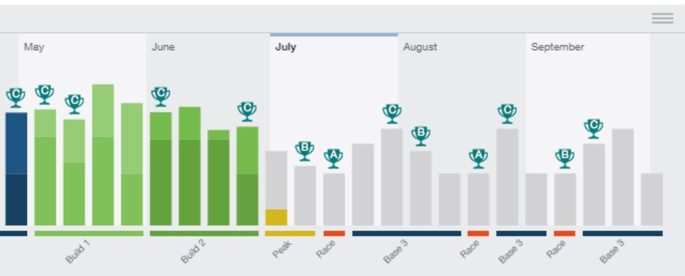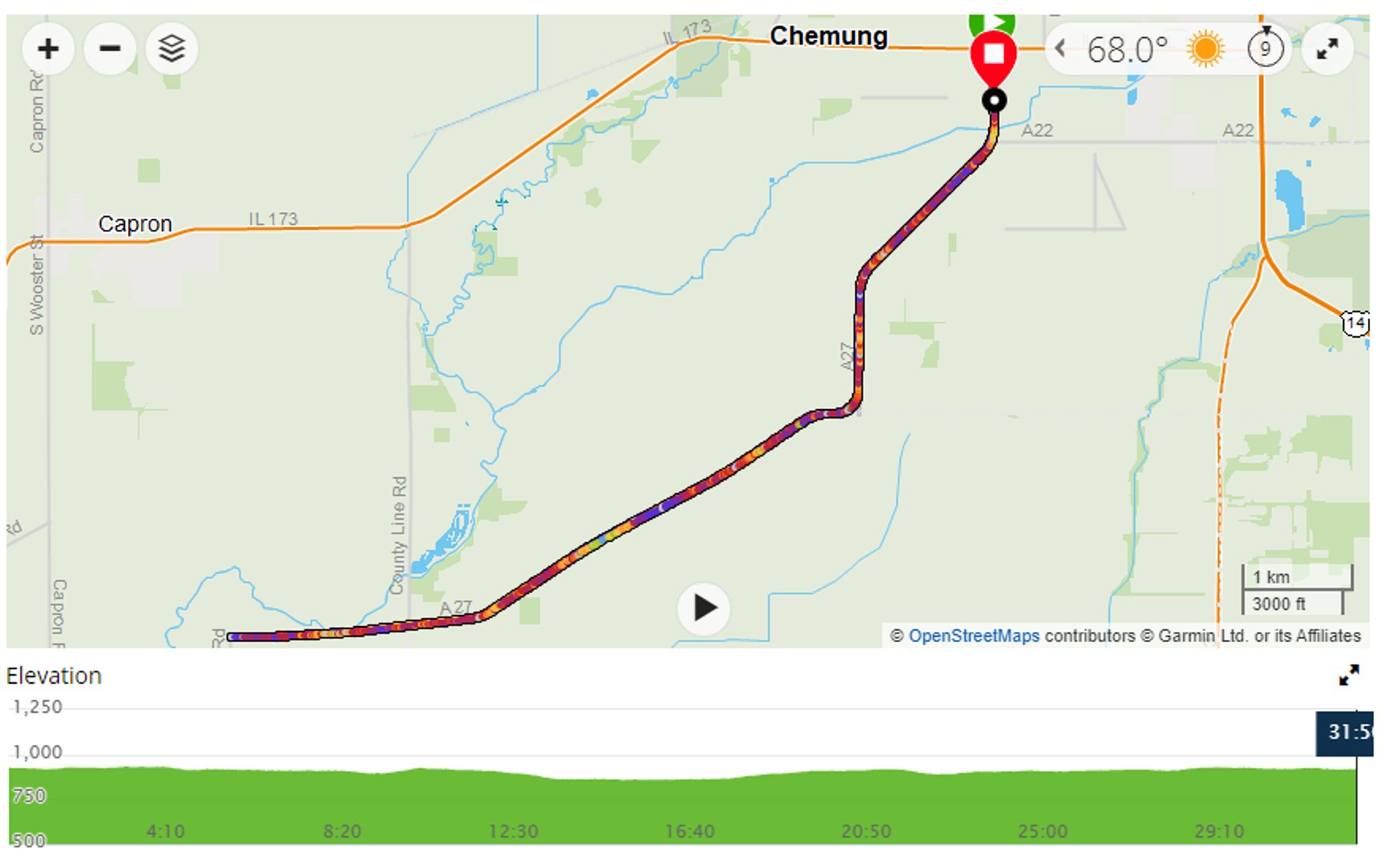How to pace a time trial like a pro
Posted in Time Trial Tips
One of the challenges of time trialing is finding the fastest pace that you can sustain over the entire course. Each race presents its own set of challenges. Watch this short video (7:30) from the Global Cycling Network to learn strategies to improve your pacing like a pro.
How to pace a time trial like a pro
What have I learned?
Despite competing in 98 time trials since 2010, I still struggle at times with race pacing. This is due to a combination of factors both controllable and uncontrollable. The controllable factors include my recent training/racing, time of season, and gear. The uncontrollable factors include race-day weather conditions and the course profile. How do each of these factors impact race pacing?
- Recent training/racing: For the past two years, my race season has featured almost 20 races. During the pandemic, some of these races have become virtual online events. As you can see from the graphic below, my training volume decreases as my racing intensity increases in the second half of the season, especially with back-to-back weeks of racing. Switch your endurance training to speed training in the second half of the season for your “A” and “B” races.

- Time of season: Before the pandemic, my race season started in January with monthly indoor races. These indoor races have been cancelled. The outdoor race season begins in April and runs through September. The first outdoor race is currently scheduled for late April. During the offseason, my coach and I identify the most important events for the upcoming season, such as state or national championship races. These become my “A” races, the events that I will exert my maximum (1.0+) effort or intensity factor (IF). The local and regional races in the second half of the season will be my “B” races, the events that I will exert a submaximal (0.9 IF) effort, focusing on either pace or form. The local and regional races in the first half of the season will be my “C” races, the events that I will exert a moderate (0.7-0.8 IF) effort, focusing on both pace and form. Your season should feature only 1-2 “A” races, 3-4 “B” races, and the rest should be “C” races, especially in the first half of the season.
- Gear: As discussed in the video, a power meter is a very important factor in pacing, both in training and racing. I use a Garmin Edge 510 GPS computer on my race bike paired to Garmin Vector 3 power pedals and a Wahoo Tickr heart rate monitor. This gives me both real time power and heart rate data during the race and a post-race record of my effort for analysis by my coach. But, if you don’t know what your functional threshold power (FTP) number is, a power meter is meaningless. The same holds true for a heart rate monitor. If you don’t know what your functional threshold heart rate (FTHR) number is, a heart rate monitor is also meaningless. How do you determine your FTP and FTHR? Click on the following link: How Fit Are You Really?
- Weather conditions: I start watching the race day weather forecast a week or more in advance. I’m watching for rain and wind speed/direction with respect to the course layout. Rain will have a constant effect on your pacing since it will increase wheel drag. The effect of the wind, on the other hand, will require continuous adjustment based on whether the wind is a headwind, tailwind, sidewind, or a combination of two of them. On an out-and-back course, like the one pictured below with a 9 mph wind from the north, the wind was a tailwind for the first half of the outbound leg, changing to a tail/sidewind for the second half. On the inbound leg, the wind was a head/sidewind, changing into a direct headwind. My time for this race on August 1, 2020 was 0:31:51 (22.1 mph average) with intensity factor of 1.079. My time for the previous year’s race on August 3, 2019, with zero wind was 0:30:58 (22.7 mph average) with intensity factor of 1.136. For comparison, I completed a virtual race on this course on May 9, 2020, with a time of 0:30:37 (23.0 mph average) with an intensity factor of 0.945. There was no wind/weather effects, but also no downhill coasting. Remember, the stronger the wind, the more effort will be required to maintain your pace.

- Course profile: In the Midwest, many of the time trial courses are conducted on fairly flat rural roads, like the course above. There will be exceptions, like the 11-mile state championship course below, the initial 60% of it was uphill. I averaged 20.3 mph for this race. But, I averaged only 10-12 mph on the uphill portion. Then, once I crested the hill, I maintained 30-40 mph to the finish line. If you are unfamiliar with a course, arrive early and either drive it in your car or conduct your warmup on the course. Better yet, see if the race course is available online and conduct a virtual race effort several weeks before the live event.

Any questions?
If you have any questions about time trial racing or about your cycling goals, training, lifestyle, or gear, I’d like to hear from you. Just drop me a note.
